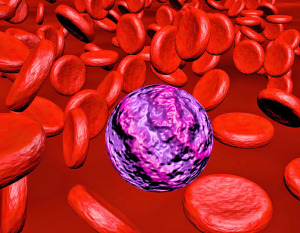Here are a couple of stem cell stories that caught our eye this past week. Some are groundbreaking science, others are of personal interest to us, and still others are just for fun.
Laser therapy spurs stem cells to repair teeth. Harvard University scientists have, for the first time, used a type of laser trigger to coax stem cells to regenerate dental tissue. As reported this week in the journal Science Translational Medicine, the research team—led by Harvard Bioengineer Dr. David J. Mooney—sets the stage for one day harnessing this therapy to regenerate many types of tissue.
Specifically, Mooney and his team used a low-power laser to trigger dental stem cells to grow into dentin—the layer of tissue encased inside the tooth enamel that makes up the majority of the tooth. Scientists have used a variety of methods to get these stem cells to grow dentin, with limited success. But as Mooney explained in this week’s news release, the team took a different approach:
“Our treatment modality does not introduce anything new to the body, and lasers are routinely used in medicine and dentistry, so the barriers to clinical translation are low.”
These studies were performed first in animal models and then in human dental tissue in a dish. Next, the team plans to start human clinical trials. If their principle proves successful, Mooney is optimistic that this technique could be applied to a variety of cell types.
European Commission Votes No on Stem Cell Ban. In a move hailed by scientists in Europe and around the world, the European Commission has rejected a request by the organization One of Us to ban funding for human embryonic stem cell research.
One of Us filed their petition, which had garnered 1.7 million signatures, with the Commission’s new European Citizens’ Initiative scheme. This scheme was launched to boost participatory democracy throughout the European Union. As a rule, any petition with at least 1 million signatures automatically triggers a parliamentary hearing and formal response from the Commission.
As reported in Nature News, the Commission’s reasoning for rejecting the petition was as follows:
“It said that the EU Council of Member States and the European Parliament had last year debated the issue thoroughly, and no new information was available to warrant a return to the debate so soon. At the time, member states and parliament both agreed that stem-cell research held great promise for currently incurable diseases such as Parkinson’s disease, and it was thus in the public interest to support it. They also agreed that human embryonic stem cells are still sometimes required in such research.”
In fact, support for human embryonic stem cell (hESC) research has been steadily increasing around the world, including back here at home. A Gallup poll published today showed that 65% of Americans support hESC research—a record high.


![Seen through a microscope, these color-enhanced skin cells from progeria patients have been induced to become smooth muscle cells, some with abnormalities such as double nuclei. [Credit: Haoyue Zhang]](https://aholdencirm.files.wordpress.com/2014/05/73316_web.jpg?w=676)







